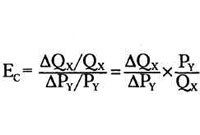You will need
- formula brown's formula Gini
Instruction
1
The coefficient of the Gini can take values from 0 to 1. It can also be expressed in percent.
To calculate the Gini coefficient can be the brown formula: G = |1-?(X{k}-X{k-1})(Y{k}-Y{k+1})|. In this formula, G is the Gini coefficient, X{k} - cumulate proportion of the population, Y{k} is the proportion of income which, in aggregate, receives X{k}. ? the summation sign. The summation is conducted according to the index k from k = 1 to k = n, where n is the number of households.
To calculate the Gini coefficient can be the brown formula: G = |1-?(X{k}-X{k-1})(Y{k}-Y{k+1})|. In this formula, G is the Gini coefficient, X{k} - cumulate proportion of the population, Y{k} is the proportion of income which, in aggregate, receives X{k}. ? the summation sign. The summation is conducted according to the index k from k = 1 to k = n, where n is the number of households.
2
Also, the Gini coefficient can be calculated according to the formula of the Gini: G = ?(?|y{i}-y{j}|)/(2*(n^2)*||y||), y{k} is the proportion of household income in the total income ||y|| arithmetic average share of household income. The first sign of summation leads to the summation over index i from i = 1 to i = n, the second (in brackets) is the index j from j = 1 to j = n, where n is the number of households as in formula brown.
3
The smaller the Gini coefficient, the less stratification among selected groups. To calculate the Gini coefficient not only in the framework of the entire state. For example, it is possible to calculate the Gini coefficient for different groups of the population - residents of the city and the village; employees of private and state enterprises, etc.Ratio of the Gini one set may differ depending on the conditions of the calculation. The greater the number of (groups of) quantiles, which divided the totality in the calculation, the greater the Gini coefficient.It is also important to remember that the Gini coefficient does not take into account sources of income.






